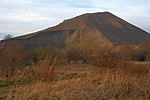Castleton Moor railway station
1861 establishments in EnglandDfT Category F2 stationsFormer North Eastern Railway (UK) stationsNorthern franchise railway stationsPages with no open date in Infobox station ... and 4 more
Railway stations in Great Britain opened in 1861Railway stations in the Borough of ScarboroughUse British English from March 2017Yorkshire and the Humber railway station stubs

Castleton Moor is a railway station on the Esk Valley Line, which runs between Middlesbrough and Whitby via Nunthorpe. The station, situated 16 miles 45 chains (26.7 km) west of Whitby, serves the village of Castleton, Scarborough in North Yorkshire, England. It is owned by Network Rail and managed by Northern Trains.
Excerpt from the Wikipedia article Castleton Moor railway station (License: CC BY-SA 3.0, Authors, Images).Castleton Moor railway station
Bow Bridge Lane,
Geographical coordinates (GPS) Address External links Nearby Places Show on map
Geographical coordinates (GPS)
| Latitude | Longitude |
|---|---|
| N 54.4671509 ° | E -0.94675 ° |
Address
Castleton Moor
Bow Bridge Lane
YO21 2EZ , Danby
England, United Kingdom
Open on Google Maps









